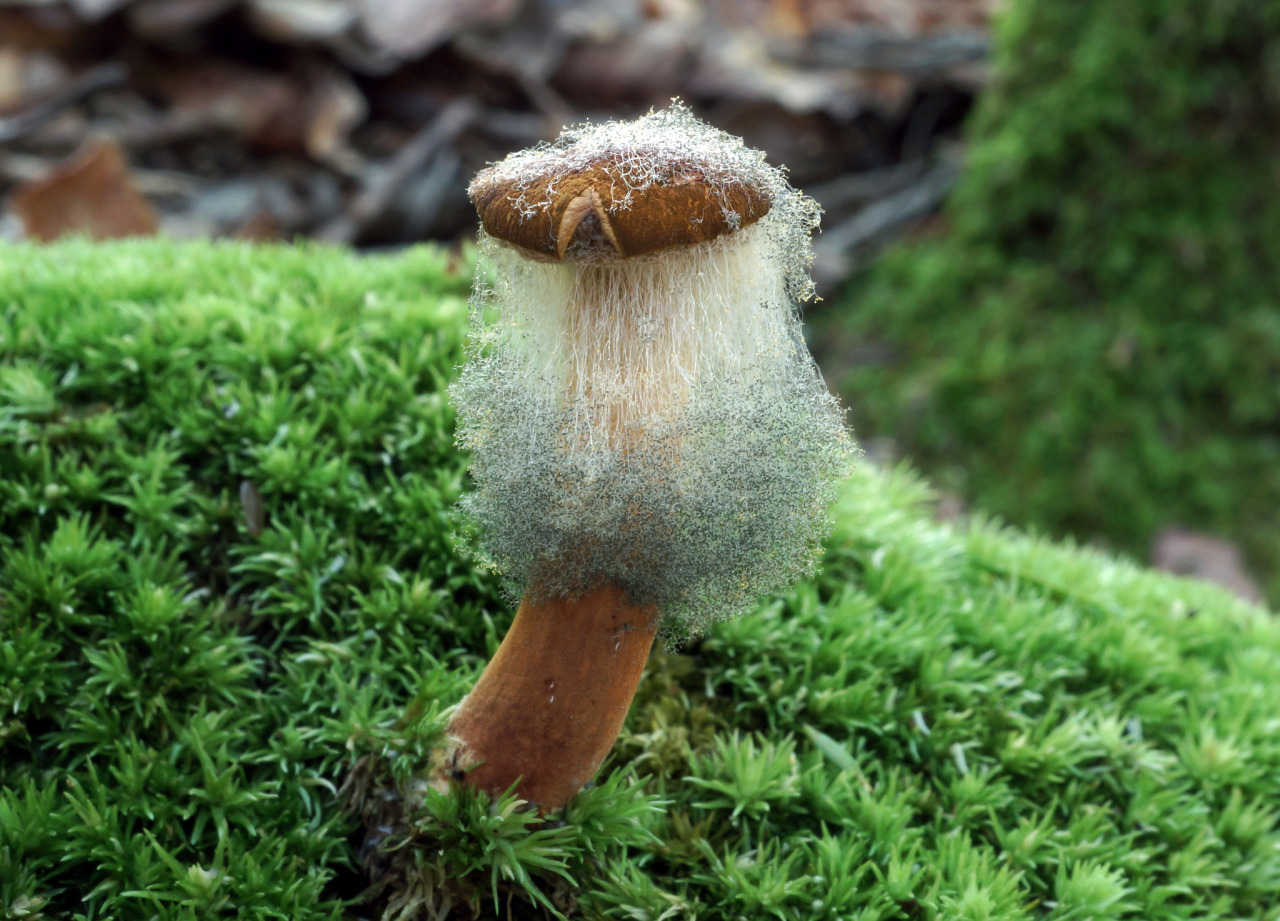Parasitic Molds - Observation of the Week, 8/5/18

Our Observation of the Day is this Syzygites megalocarpus mold, seen in New York by @tbigelow!
Molds can be pretty beneficial to humans - think Penicillum for both blue cheese and antibiotics - but they can also be detrimental, causing ringworm on our skin or forcing us to throw out the remainder of that loaf of bread. Many other organisms are affected my molds, and in the case of Syzygites megalocarpus that includes their fellow fungi.
Tom Bigelow, who is the current president of the New York Mycological Society, took the above photograph while on an NYMS walk in Harriman State Park back in the summer of 2013. “[It’s] a common parasite that attacks a variety of fungi - I most often encounter it on boletes,” says Tom. “The infected bolete [in this case] had a very long stipe, so the sporangiophores hang down like hair…”
Syzygites megalocarpus, as Tom notes, is a mold that that parasitizes other fungi, especially those we think of as “mushrooms.” When a spore lands on a suitable host, such as a mushroom, it extends hyphae into it. These hyphae use enzymes to break down the mushroom’s flesh, the components of which are absorbed by the mold. When Syzygites megalocarpus is ready to reproduce, it grows sporangiophores on the surface of the mushroom. At first they are often white or bright yellow before eventually hanging down and attaining a more grayish pallor. The spores at the ends will be picked up by the wind, in the hopes of chancing upon another host. Molds like this are integral to many ecosystems, as they contribute greatly to decomposition
“I was drawn to the NYMS the same way most people come to amateur mycology: an interest in learning how to find and identify edible wild mushrooms,” explains Tom. “It was under the influence of the NYMS’s guiding light, Gary Lincoff, author of The Audubon Guide to Mushrooms, that my interests quickly expanded. With Gary’s guidance and encouragement, the NYMS began an intensive survey, about 7 years ago, of fungi occurring in New York City. We now hold weekly walks in city parks all year round.”

The society began participating in the North American Mycoflora Project this year, which, as Tom (pictured above) explains, is
a collaboration between professional and amateur mycologists that aims to systematically document fungi in North America. Participating clubs document their collections using an online platform (our club uses iNaturalist!); collect specimens for deposit in an herbarium (in our case, the New York Botanical Garden); collect tissue samples for DNA sequencing.
iNaturalist is not only the online platform for NYMS’s contributions to the mycoflora project, he says “it is an excellent way for me to archive my photos which I have been amassing for the 10 years that I’ve been seriously interested in observing and collecting fungi.” Here’s hoping for more amazing fungal photos from Tom’s archives!
- by Tony Iwane
- If you’re interested in posting mushroom observations to iNaturalist, our Introduction to Mushrooming video has some advice and tips from @leptiona!
- Game of Molds is a great fungal take on Game of Thrones’ epic opening title sequence.
- This blog post has some cool facts about Syzygites megalocarpus mold.
- NYMS has several iNaturalist projects, which can be found here, here, and over here.





Comments
Terrific!!
that's so cool!
@alisadematteo I am so sorry. That is horrible. Who would think doing something so simple could be so detrimental. It sort of reminds me of an article I read about a Man in Milwaukee,Wisconsin August 3rd 2018. His dog licked him and over a few days he started getting bruises and had to have his forearms and legs amputated, part of his nose as well. It was a rare blood infection. Very rare! Who would think that the affection from your pet could have such an impact on your blood. I am learning something different everyday, some of it is very sad and some is very good. Hopefully, getting news out like this will help someone else.
It is a very weird but a cool looking photo!
I'm horrified. Something so beautiful and so terrible.
The danger may be in your yard and you do not even know it, although it is known that fungi always have to be careful. Thank you for all this information. I'm so sorry for your husband @alisadematteo
Terrific shot!
@alisadematteo I'm so sorry to hear about your husband, I'm glad he is being treated and thank you for contributing that story in your comment.
Add a Comment